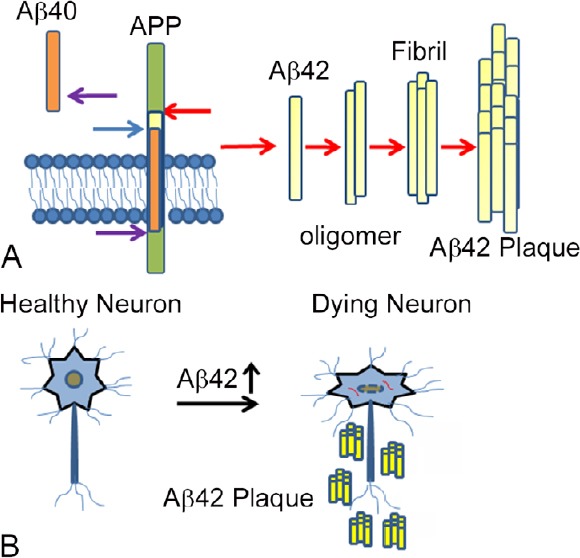Figure 3.

Accumulation of Aβ42 plaques triggers neurodegeneration.
(A) Cartoon showing generation of amyloid-beta(Aβ)42 plaques by improper cleavage of a transmembrane protein, amyloid precursor protein (APP). Usually, APP is cleaved by α-secretase and γ-secretase to give Aβ40 peptide. If APP is cleaved by β-secretase and γ-secretase, then insoluble Aβ42 peptide is generated which forms Aβ42 oligomers and aggregate to Aβ42 fibrils and then amyloid plaques. (B) These Aβ42 get accumulated around the neurons, which triggers a neurodegeneration response. The molecular genetic mechanism of this process is not fully understood.
